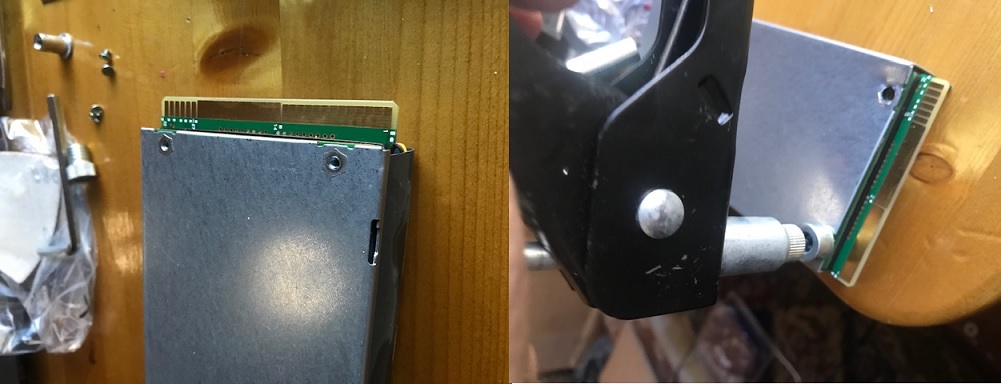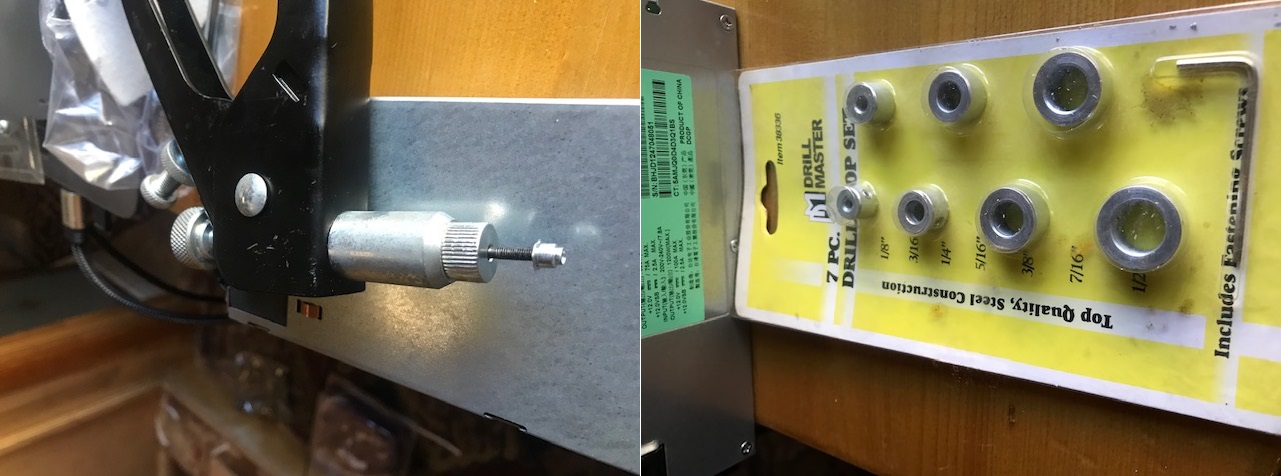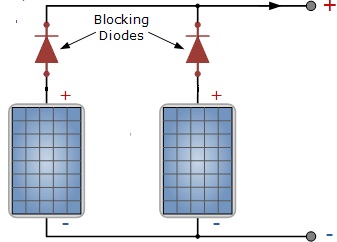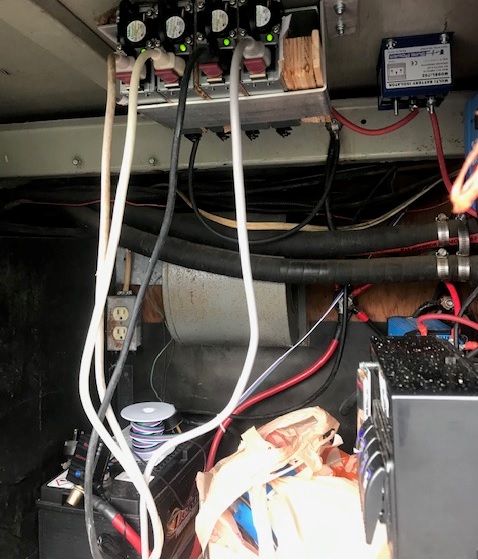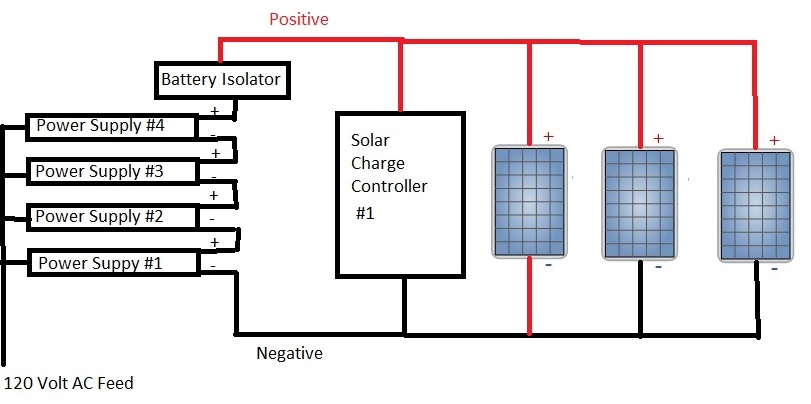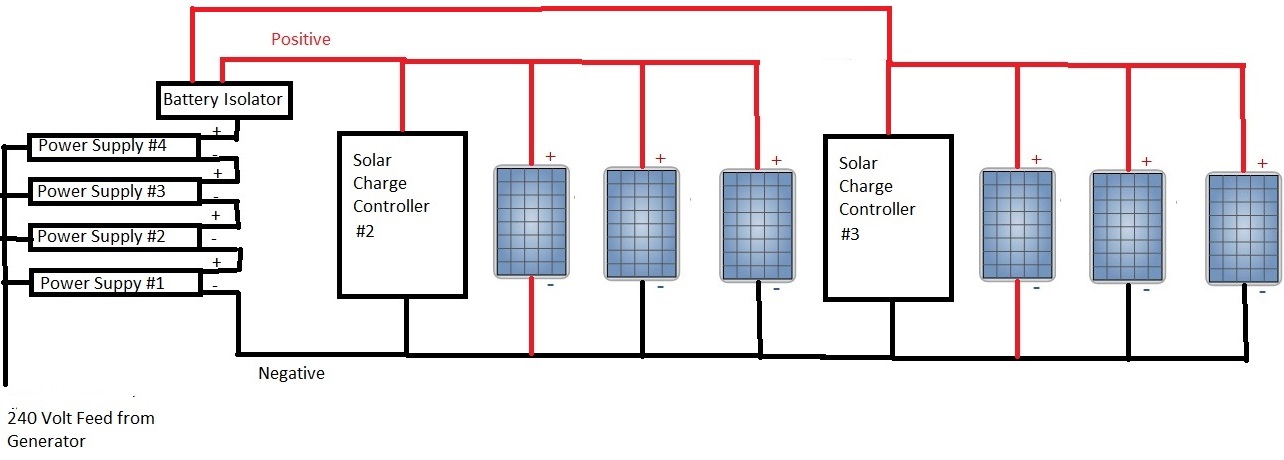Huh, what?
Ok I plugged the dam thing in!!!
In finishing out the kitchen with running the power inverter for extended periods of time and experimenting with the climate control for the bus with my home automation system. I was severely behind the power curve (aviation term for your just about to hit the ground in a non-survivable manner, unless you get your head out of your @$#, right now...), I managed to flat-line the house battery system. Danger, Danger Will Robinson!!!!
Ok this post is going to cover a lot of ground so it will be broken up into multiple parts.
One of the major challenges is how do you recharge your solar house battery pack when the sun hasnít been shining for multiple days and you have run it down into the ground?
Just to give an example, I have 3.7KW with ten solar panels that are flat mounted on the roof of my bus.
Given my high latitude (almost in Canada) they are not at the correct angled to harvest the most power.
As an example, a recent day with a bit of mixed sunshine they generated 5.1KW of solar production, however the same panels only generated around 0.1KW of power while it was gloomy rainy day!!!
Prior to getting all ten panels mounted, a couple panels worked almost as good leaned up against the side of the bus pointed at the sun (closer to the correct angle) when the sun appears in soggy Seattle in the winter!!!
Hey, I should be in Arizona this time of the year!!! I am definitely behind schedule right now and can sort of blame it on CovidÖ
Anyway, as part of a typical solar configuration you generally have:
1. Solar panels
2. Solar charge controllers of which the best is the MPTT types.
3. House battery system
4. Inverter/charger
For the solar charge controllers, I absolutely love, love Victron products, because of the quality of that product line and the free intrinsic cloud data services you get from using their products. (See my sort of fake power production image above)
However, while I am willing to pay a premium for their solar charge controllers, not so much for their inverter/chargers.
Victron is a global company and they fairly much package their product line for that target audience and
this leads to a bit of disconnect in the America market.
In Europe they have three phase power and here in the US most homes have what we call split phase 240V power.
So, Victronís solution is hey buy three inverters for Europe and two for the US, unless your power needs are low in which case you can buy just one for 120V or 208V power.
Sort of if you want it, just pay for it!!!
In my motorhome I decide to go with a 240V split phase inverter that was compatible with my choice to reuse Tesla car battery modules (could have been the more standard LifePO4 batteries).
Hey, I do own a Tesla Model S P85 in which you are always a couple ounces of foot pressure away from releasing your inter demon (very quietly/civilized, just instant raw acceleration whenever you desire it.) Ö
So my battery choice was a couple of recycled Tesla battery modules, from some poor sucker who totaled their Tesla...
Given this choice and the technical difference between LifePO4 batteries and Tesla battery modules, my choice narrowed down to a Sigineer inverter/charger; which is a 6KW split phase true sine wave inverter that can surge to 18KW for short time periods. Given this I can fairly much run anything that I would normally run when hooked up to 50AMP service with my motor home/bus conversion while off grid.
Note the Sigineer inverter/charger works with both LifePO4 batteries and Tesla Battery modules, something you can not say for other brands.
Sigineer marketing material indicates that it can cover several applications including RV usage.
However, I do find the Sigineer to be a bit limited in a couple of aspects for RV usage and must consider that it was originally designed to be a UPS device in commercial service. These limitations are:
1. Charger circuitry only works with 240V input source.
2. Inverter/Charger can only do one function at a time.
This works well as a backup UPS power source where when the power returns it bypasses the new power feed to the target load and recharges the battery pack. However, it sucks when you consider a couple of typical scenariosí that you encounter as a RVíer.
1. Mooch-docking in a friendís driveway with a simple extension cord.
2. Campground with 30AMP 120V service.
This is where the Victron inverter/chargers really shine in that they allow the 120V though in passthrough mode and do a power assist mode in the case you need to run an air conditioner and microwave at the same time. Where the extra temporary extra power need comes from your house battery bank, without tripping your friend's circuit breaker.
However, a Victron 3KW power inverter costs about the same as a single 6KW split phase Sigineer inverter; where with the Victron product line you would need two inverters to cover the same functionality for your motor home.
So how did I choose to work around this flaw/limitation with the Sigineer product line?
Standby for part two!!!


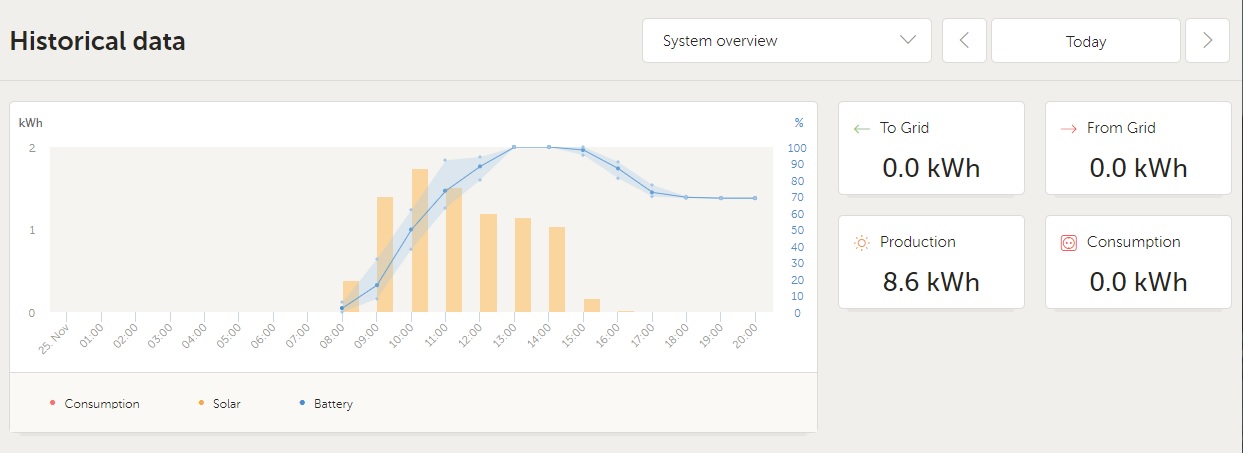

 Reply With Quote
Reply With Quote